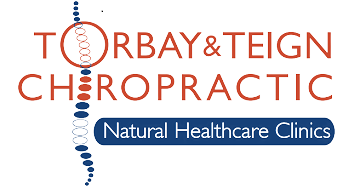Try these tips for improving your workstation.
Many of my clients come to me with musculoskeletal complaints, such as joint and back pain, which have been troubling them for months, years even. And more often than not, they share one thing in common: long hours in the office.
Surprising as it may seem, those hours at the desk can be more damaging to your skeletal health than even the most sweat-inducing manual labour. Why? It’s usually your workstation that’s the culprit.
Run down my Chiropractor’s Checklist for setting up your workstation and you can prevent and even reverse damage to your neck, upper back, lower back, and shoulders.
1. Keep your distance
Measure the distance from where you’re sitting to your monitor. It should be at arm’s length, so test to see if you can touch it with the tips of your fingers. Any closer or farther away and your eyes will start to strain, leading to poor posture as you lean forwards or backwards to compensate, and back pain soon after.
The exception here is extra-large monitors. If your monitor is larger than 20”, you should sit slightly farther back.
2. Put your feet up
If you can’t place your feet comfortably flat on the floor, you’ll probably need a foot rest. I’ve seen some fantastic ergonomic designs which offer extra-wide platforms and adjustable height so you can play around to find your most comfortable position to help with back pain.
3. Are you sitting comfortably?
Having a good office chair is of paramount importance for dedicated 9-to-5ers. Ideally, your chair should have an adjustable back, seat and arm rests. I’d recommend looking for a chair which has five wheels on its base so you can move around with ease, without risk of tipping.
You can also pick up chairs with in-built lumbar support, and I’d always suggest spending that little bit extra for this comfortable design perk.
When you’re sitting in your chair, your thighs should be parallel to the floor, your feet should rest flat on the floor and the back of your knees shouldn’t touch the edge of the chair. If you like a chair with arm rests, make sure that using them doesn’t result in slouching, or hunched or drooped shoulders.
4. Sizing things up
Is your desk big enough? You should be able to arrange everything neatly so that it’s within easy reach. What you need to avoid is excessive bending and twisting to reach all your equipment, which brings us to…
5. All the mod cons
Finally, you need to make sure that your kit is all comfort-friendly. You can buy adjustable-height keyboard trays which are big enough to hold your mouse and your keyboard comfortably.
Trackball and touchpad mouse alternatives are great for relieving pain from repetitive motion. And on the topic of your mouse, make sure it’s placed close to your keyboard so you don’t have to lean over to reach for it.
As for your keyboard, browse the market for a contoured design which supports your wrists, as this can alleviate pain in your hands, wrists and shoulders. You can also invest in wrist pads, but don’t use these while you’re typing.
Check?
If you’ve ticked your way through the five tips above, you’re well on your way to a happier musculoskeletal system. But if you’re concerned about anything or think you need more help to relieve your symptoms, please feel welcome to get in touch.
Call my chiropractor clinic in Torquay today on 01803 329799 and we can arrange an appointment at your convenience.
Torbay Chiropractic Clinic, 48a Barton Hill Road, Torquay, TQ2 8JD

